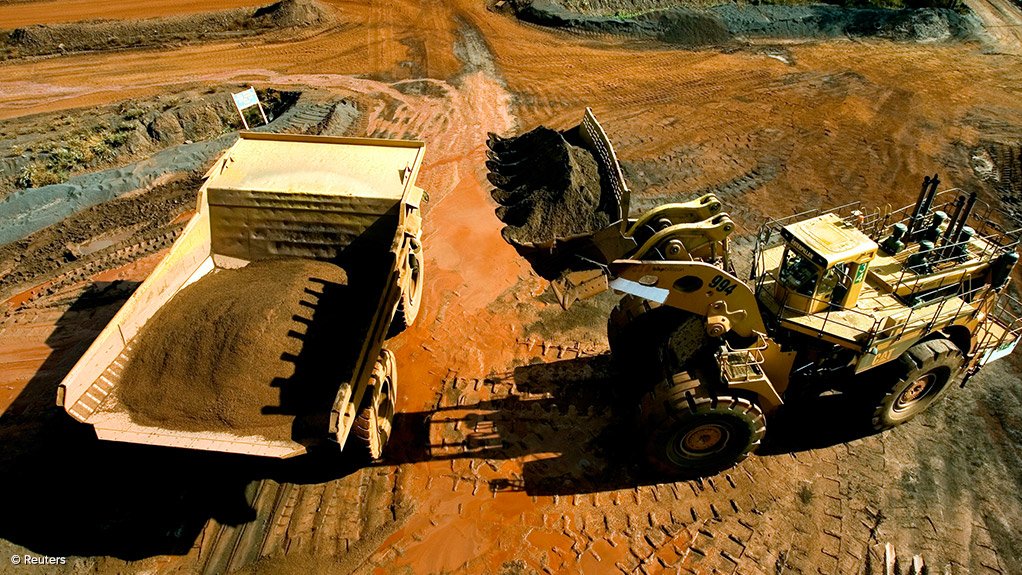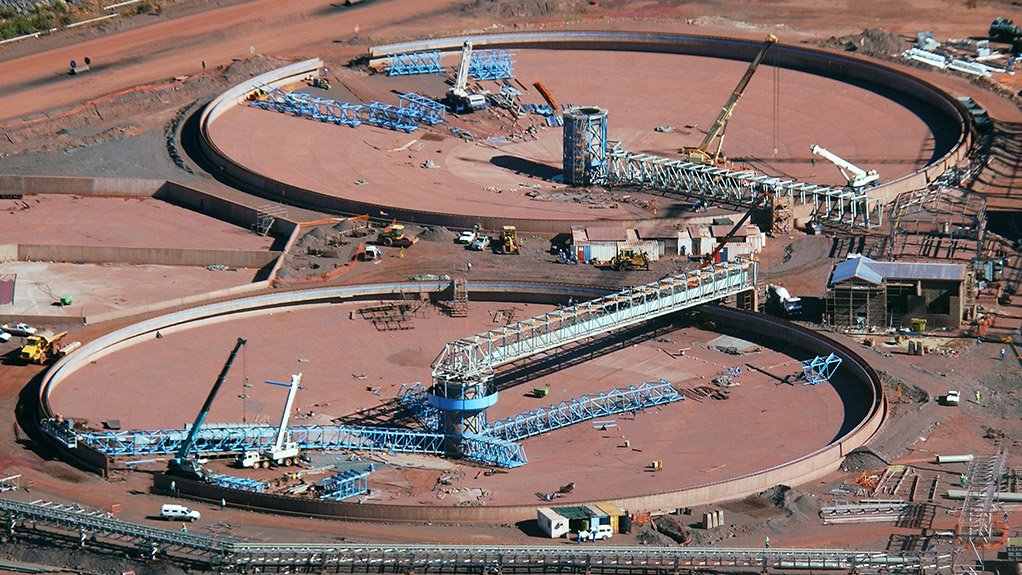SA must improve industry coordination – advisory firm



IRON-ORE ADVANTAGE South Africa has access to some of the world’s best iron-, manganese- and chrome-ore deposits
Photo by Reuters
PRODUCTION WOES Kumba Iron Ore’s third-quarter production decreased by 24%, compared with the third quarter of 2012, reaching 9.5-million tons
Alack of industry coordination was adversely affecting local iron-ore operations, said natural resources-based advisory firm Bryanston Resources director Gilbert Pooley at the Metal Bulletin Events second African Iron-Ore conference, held in Johannesburg last month.
Having attended the Africa Down Under conference, in Perth, Australia, in August, Pooley was impressed by the level of coordination among the Australian mining industry players.
He pointed out in his chairperson’s address that the Western Australian government actively participated in the conference and encouraged the local mining industry – through incentive programmes – not only to ensure that beneficiation took place locally in a fair and equitable manner but also to expand its operations worldwide.
Pooley added that this level of coordination was “severely lacking” in South Africa, adding, however, that he did not believe that the South African government was solely to blame for the lack of coordination in the local mining industry.
He said this lack of coordination was a challenge, which all stakeholders had to confront.
“South African iron-ore stakeholders have a lot of work to do to ensure that they uphold the country’s position as a premium destination for iron-ore and other bulk-commodity investments on the continent,” stressed Pooley.
He noted that even global diversified mining major Anglo American’s iron-ore division, Kumba Iron Ore, had been struggling to meet its production targets for this year.
Mining Weekly reported in October that Kumba’s third-quarter production decreased by 24%, compared with the third quarter of 2012, reaching 9.5-million tons, as output from the company’s Sishen mine, in the Northern Cape, was hindered by ongoing pit constraints and a Section 54 regulatory stoppage in August.
The JSE-listed Anglo American subsidiary said in a production and sales report for the three months ended September 30 that Sishen’s production had decreased to 6.4-million tons – a 34% decrease, compared with 2012’s third-quarter production results, and a 25% drop, compared with the previous quarter, which ended June 30.
Pooley also mentioned that downstream iron-ore users, such as local steel manufacturers, were also not “in very good shape”, which was an obvious concern for iron-ore mining operations.
Moreover, Engineering News reported in July that South Africa’s steelmakers collectively produced 6.9-million tonnes in 2012, compared with the 7.5- million tonnes in the previous year, dropping in the world steel production rankings from 21 to 22. The decline in South African primary steel production con- tinued in 2013.
Beneficiation Conundrum
Pooley stated that the alloy industry shared two important cost drivers with the steel industry – energy and ore – and that South Africa was currently in a “strong position” in terms of its orebodies.
“We have access to some of the world’s best iron-, manganese- and chrome-ore deposits, which should place South Africa in a strong cost-advantage posi- tion, compared with competing countries,” he stated.
However, he highlighted the cost of electricity and the inconsistency of electricity supply to mining operations as significant challenges that South Africa had to face.
“The serious challenges that local operations face with regard to electricity brings into question the South African government’s drive to ensure that beneficiation takes place. Although I believe the principle of beneficiation is laudable, I also believe there is some incongruence in this policy area,” Pooley added.
He explained that, while government’s intention was to make local manufacturers more competitive against global players, the reality was com- pletely different on the ground, owing to the high costs of operating in South Africa.
“Many local steel manufacturers are either significantly reducing their production levels or trying to sell off parts of their busi- nesses, while some are just simply going out of business,” he said.
Engineering News in July reported on the liquidation of structural steel company Cosira, which admitted in its business rescue application that the company was “financially distressed” and could not pay its debts.
Pooley stated that the consequences of blanket beneficiation schemes for any of South Africa’s mineral resources would result in South African products becoming more uncompetitive in global markets.
“Some of the solutions for local industry stakeholders are quite drastic and include investing in iron-ore and steel manufacturing outside South Africa, in countries such as Malaysia, which offer companies competitive electricity prices,” he emphasised.
Another option, which Pooley said local companies might decide to undertake in future to ensure their operations had continuous and cost-effective electricity, was to build their own power station.
Comments
Press Office
Announcements
What's On
Subscribe to improve your user experience...
Option 1 (equivalent of R125 a month):
Receive a weekly copy of Creamer Media's Engineering News & Mining Weekly magazine
(print copy for those in South Africa and e-magazine for those outside of South Africa)
Receive daily email newsletters
Access to full search results
Access archive of magazine back copies
Access to Projects in Progress
Access to ONE Research Report of your choice in PDF format
Option 2 (equivalent of R375 a month):
All benefits from Option 1
PLUS
Access to Creamer Media's Research Channel Africa for ALL Research Reports, in PDF format, on various industrial and mining sectors
including Electricity; Water; Energy Transition; Hydrogen; Roads, Rail and Ports; Coal; Gold; Platinum; Battery Metals; etc.
Already a subscriber?
Forgotten your password?
Receive weekly copy of Creamer Media's Engineering News & Mining Weekly magazine (print copy for those in South Africa and e-magazine for those outside of South Africa)
➕
Recieve daily email newsletters
➕
Access to full search results
➕
Access archive of magazine back copies
➕
Access to Projects in Progress
➕
Access to ONE Research Report of your choice in PDF format
RESEARCH CHANNEL AFRICA
R4500 (equivalent of R375 a month)
SUBSCRIBEAll benefits from Option 1
➕
Access to Creamer Media's Research Channel Africa for ALL Research Reports on various industrial and mining sectors, in PDF format, including on:
Electricity
➕
Water
➕
Energy Transition
➕
Hydrogen
➕
Roads, Rail and Ports
➕
Coal
➕
Gold
➕
Platinum
➕
Battery Metals
➕
etc.
Receive all benefits from Option 1 or Option 2 delivered to numerous people at your company
➕
Multiple User names and Passwords for simultaneous log-ins
➕
Intranet integration access to all in your organisation




















